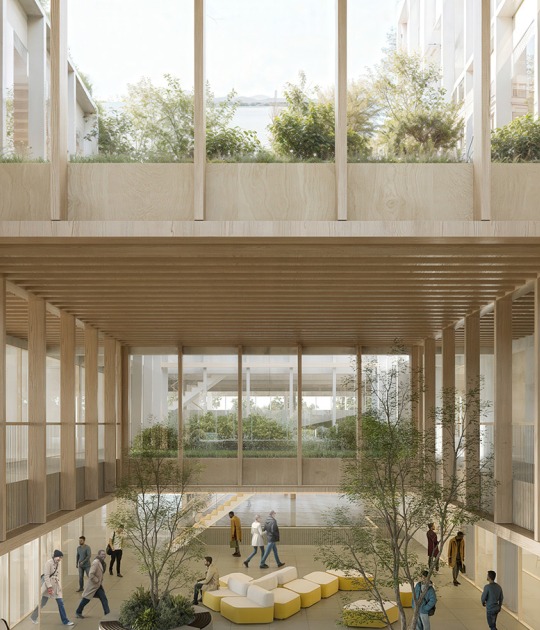Striving to be as sustainable as possible, the project features thermal mass integrated into every building that provides reductions in both heating and cooling consumption, using mostly rlocally-produced, prefabricated components will reduce the project's embodied carbon and procurement will prioritize the use of recycled materials.
Photovoltaics placed on the roof level and within the façades provide on-site energy production decreasing its consumption by 25%, while the thermal ice-storage for cooling significantly lowers peak daytime electrical consumption when the cooling load is highest, the use will be minimized by extensive external shading and a waste heat recovery system.
And more, as rainwater harvesting.; non-resource-intensive, biophilic landscaping design, and an intelligent building management system will collate data to predict and optimise energy usage while biometric systems will eliminate contact with communal surfaces by staff and visitors.























